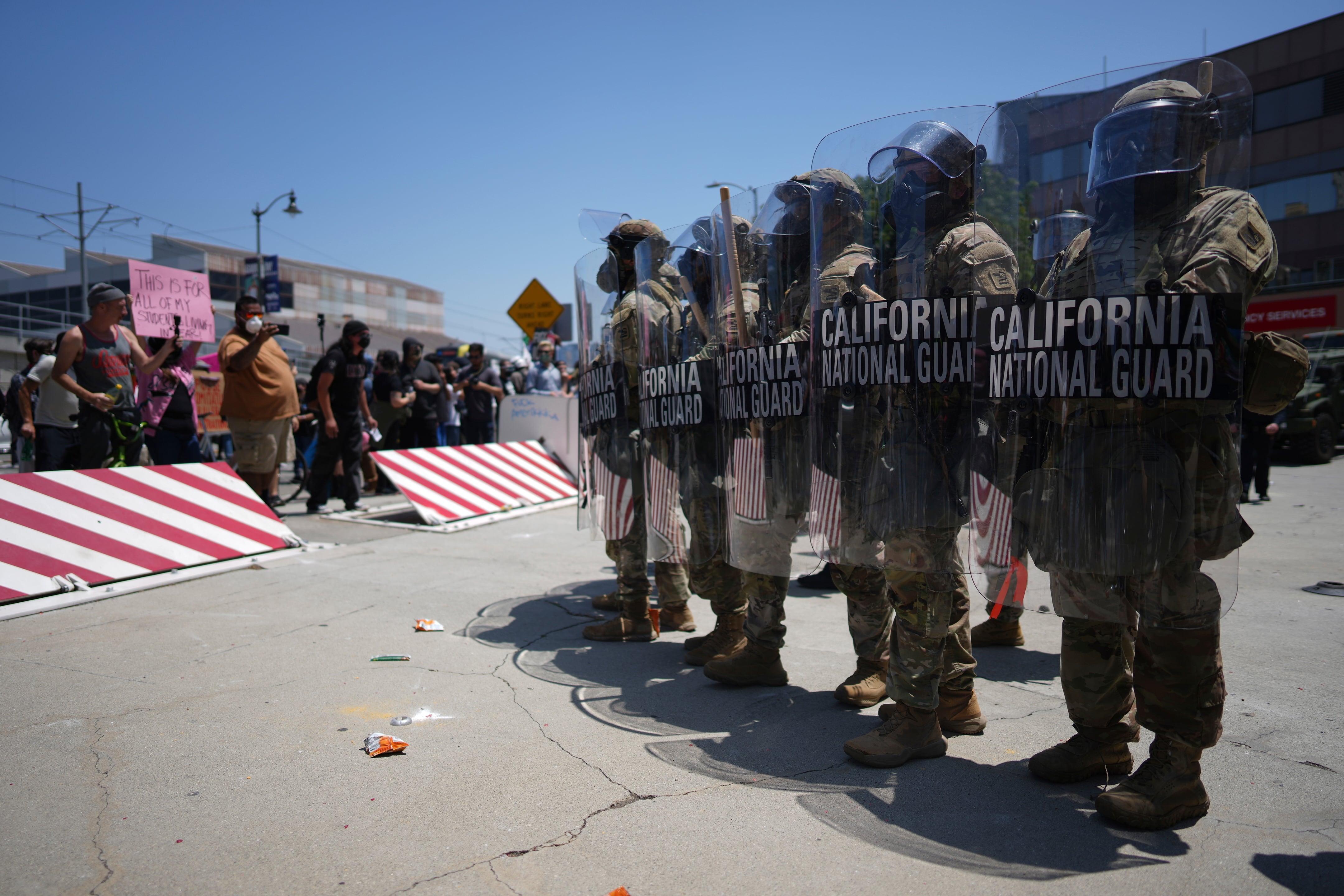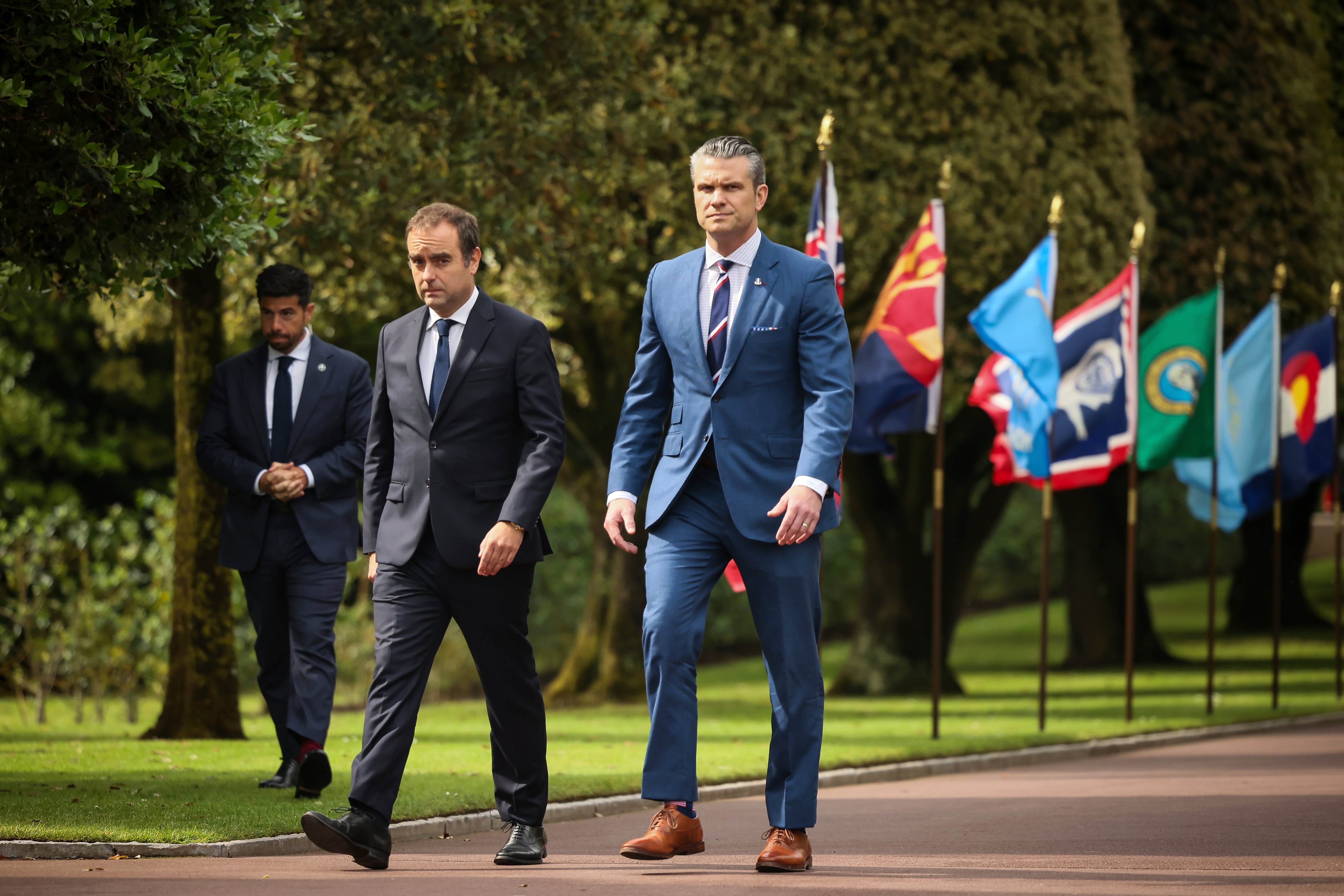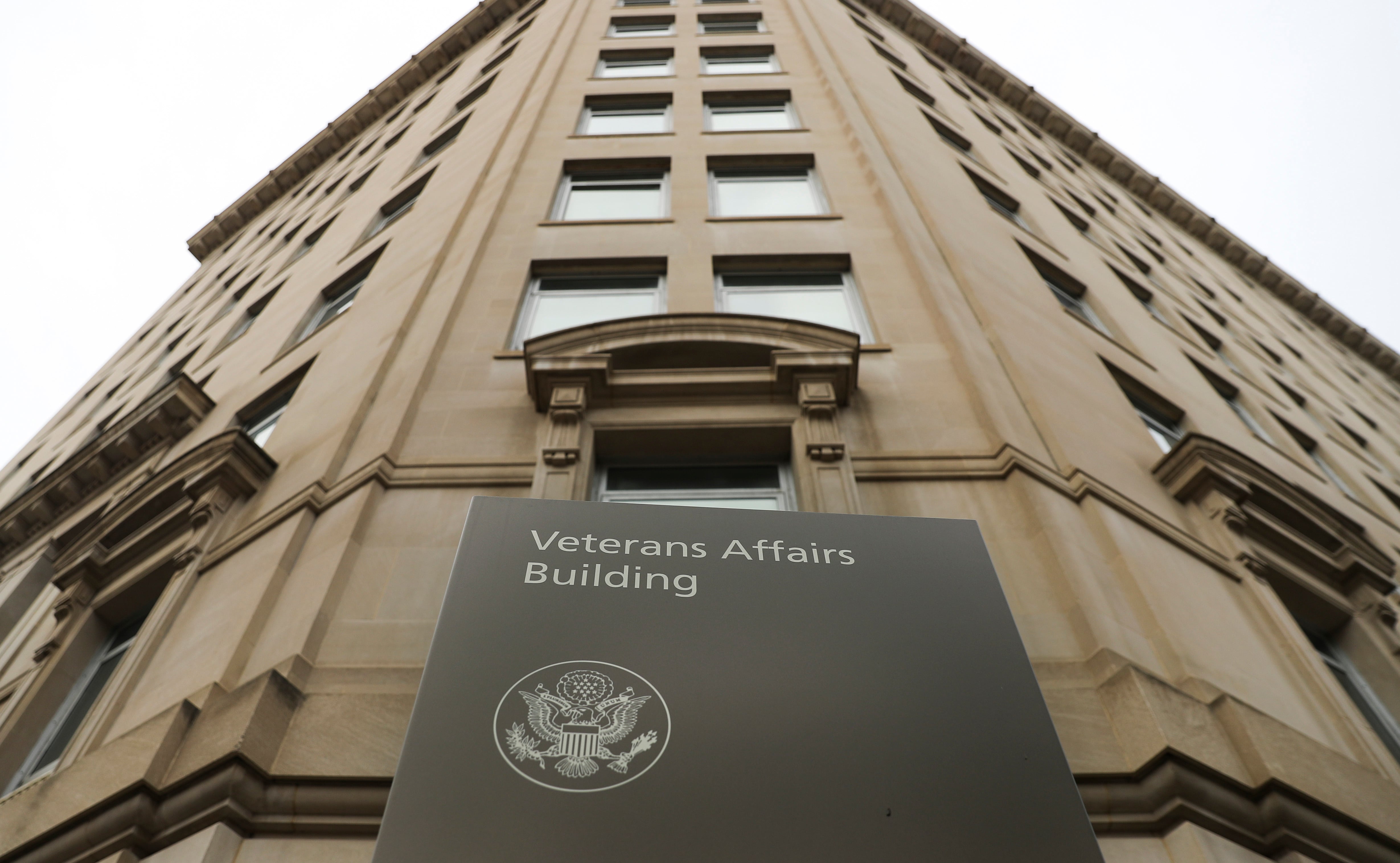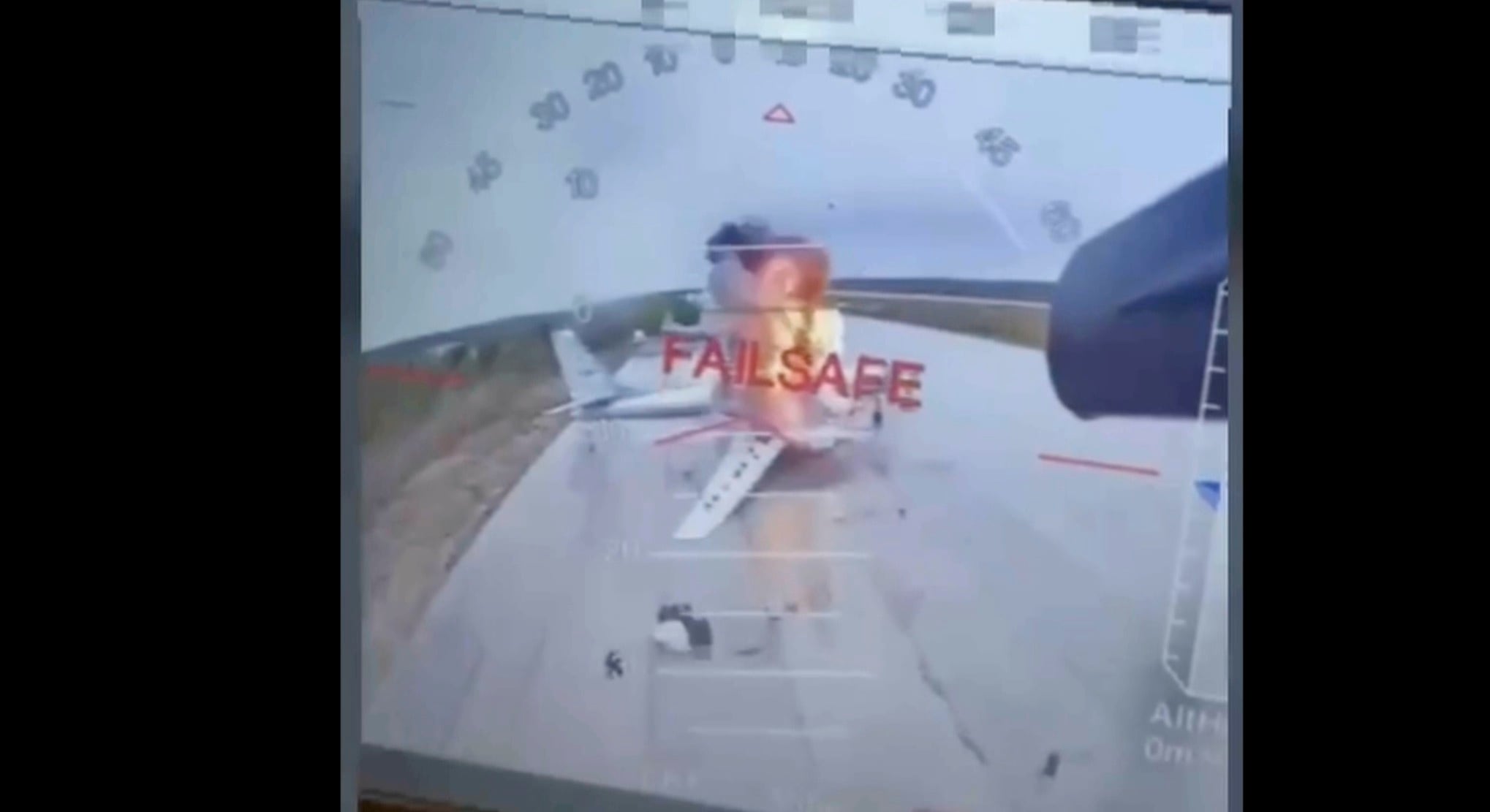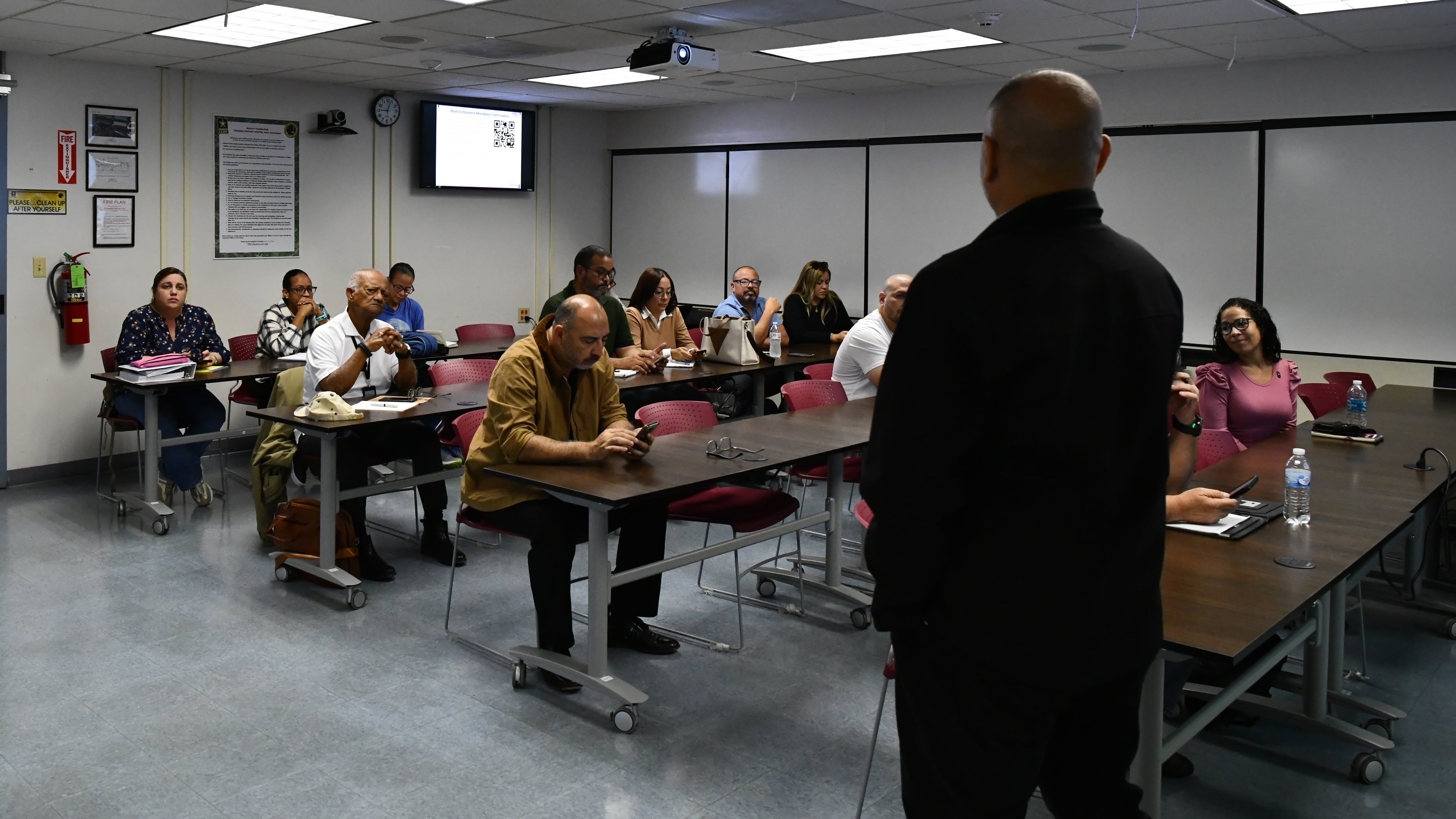The crew of an AC-130U Spooky gunship was honored Monday for their bravery during a ferocious mountainside battle in April 2019 near Nangarhar province, Afghanistan.
The commander and navigator of Spooky 41, Capt. Neils Aberhalden and Capt. John Crandall, both received the Distinguished Flying Cross during a ceremony at Hurlburt Field, Florida. The other 12 members of the air crew were each awarded the Air Medal, according to an Air Force release.
The airmen are from the 4th Special Operations Squadron, part of the 1st Special Operations Wing at Hurlburt in Florida.
The Spooky rallied to save a team of joint American special operations troops — an Army Special Forces company and a team of seven special tactics airmen — and coalition forces that were under attack the night of April 3–4, 2019, by the Islamic State’s offshoot in Afghanistan, known as ISIS-Khorasan.
Air Force Special Operations Command head Lt. Gen. Jim Slife presented the awards to the airmen, which all included a C device, which recognizes meritorious service or achievement in combat, while the recipient was exposed to hostile action or under significant risk.
“The most lethal part of any gunship is not the 25mm, the 40mm, or the 105mm [cannons] sticking out of the side of this big beautiful airplane,” Slife said. “The most lethal part of the gunship is the crew.”
“There is nothing more complicated than the dance that goes on in a gunship to bring the kind of capability our teammates have described this morning to bear on our nation’s adversaries,” Slife continued. “The orchestration that goes on is unlike anything you will see anyplace else in AFSOC or in the United States Air Force.”

In a firsthand account of the battle that the Air Force posted online, Maj. Jeffrey Wright of the 24th Special Operations Wing — who led the special tactics team on the ground — said the six-day operation was intended to root out a “notorious” ISIS-K military installation “literally dug into the side of the mountains.”
There was just one path American and allied forces could use to attack the compound, Wright said, and the ISIS-K fighters concentrated their forces there. They were motivated, well-trained, and knew how to use their firepower, Wright said, and at least three previous attempts to attack the compound had been quickly driven back.
“This was no low-level commander and his men,” Wright said. “This was ISIS-K’s Pentagon. In my 20-plus years of training and experience in the art of attacking and defending ground objectives, I have seen few more formidable defensive positions.”
RELATED

The team on the ground suffered an improvised explosive device attack by ISIS-K fighters, who had stayed hidden until the ground forces got close. An intense firefight ensued — not only from their front, left and right, but from above and below as well. Wright said ISIS fighters had prepared holes in the ceilings and floors through which they could shoot at barricaded forces, “to devastating effect.” And ISIS fighters used a network of tunnels to pop up behind the assault team, attacking from buildings that had just been cleared.
“Despite our numerical superiority, the situation was dire,” Wright said.
The assault team was fighting room-to-room in close-range gun battles, Wright said. Casualties quickly mounted, and the special tactics team knew it had to do something to get the wounded out.
The combat controller with the lead element of the assault force radioed for help, and Spooky 41 began raining down fire so fast Wright was shocked, he said.

“In 10 years as a JTAC, I’d never seen any kind of fire support as responsive,” Wright said. “Sure enough, the first rounds were right on target — a good thing, because the enemy was so close to the assault force.”
Spooky 41′s fire let the friendly forces set up a defensive perimeter and start evacuating the wounded. Three medical evacuation helicopters arrived, but the mountainous terrain prevented them from landing. So they would have to hover while hoisting up the most critically-wounded forces — within machine gun range of “dozens, if not hundreds, of enemy fighters keen to press home their advantage,” Wright said.
“I watched this unfold with a sense that, ‘This is how it happens — this is how aircraft get shot down,’” Wright said.
But Spooky 41 kept firing its cannons — some shots exploded less than 140 meters from friendly troops — and kept the pressure on ISIS-K fighters so they weren’t able to squeeze off a single shot at the helicopters. The gunship’s support allowed the medevac helicopters to hover for more than an hour and rescue all 15 of the most-wounded troops.

An F-16 arrived and, with the special tactics airmen’s help, worked together with the Spooky to integrate fires. Spooky 41 carried out air support strikes for more than 9 hours, the Air Force said, and helped clear the ISIS-K team’s fortified position on the mountain.
Wright was certain that if the gunship hadn’t been there at least some of the wounded troops would have died, and the helicopter crews also would have been lost that day. After the initial IED attack and gun battle, Wright said, no other Americans or Afghan allies were wounded that night.
“Spooky 41′s legendary airmanship is the reason why — period,” Wright said.
The 12 crew members who received the Air Medal are:
- Capt. Micah Uvegas, fire control officer
- Capt. Brian Yee, co-pilot
- 1st Lt. Nicholas Maiolo, electronics warfare officer
- Tech. Sgt. Ryan Estes, aerial gunner
- Tech. Sgt. Jacob Griffen, flight engineer
- Tech. Sgt. Austin Parrent, aerial gunner
- Staff Sgt. Samuel Mayfield, sensor operator
- Staff Sgt. Michael Martinez, aerial gunner
- Staff Sgt. Omar Diaz, sensor operator
- Staff Sgt. Jonathon Friesz, direct support operator
- Senior Airman Jacob Bateman, aerial gunner
- Senior Airman Zadok Dean, aerial gunner

Stephen Losey is the air warfare reporter for Defense News. He previously covered leadership and personnel issues at Air Force Times, and the Pentagon, special operations and air warfare at Military.com. He has traveled to the Middle East to cover U.S. Air Force operations.

